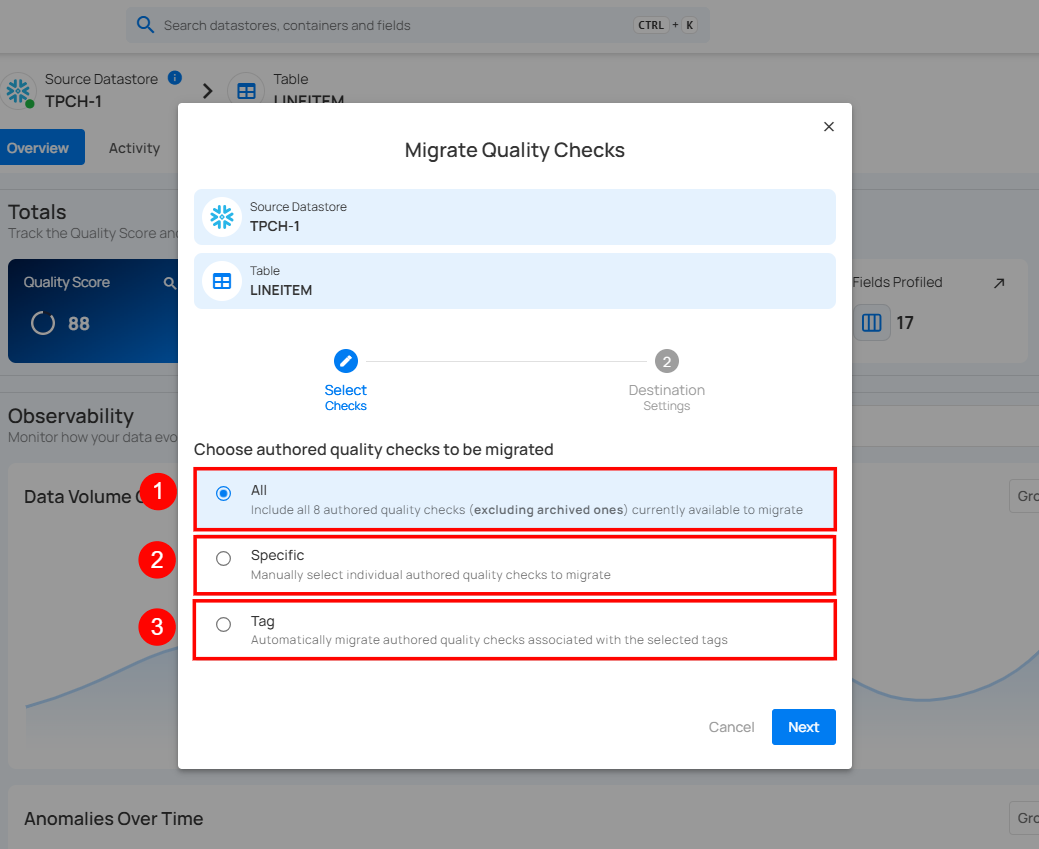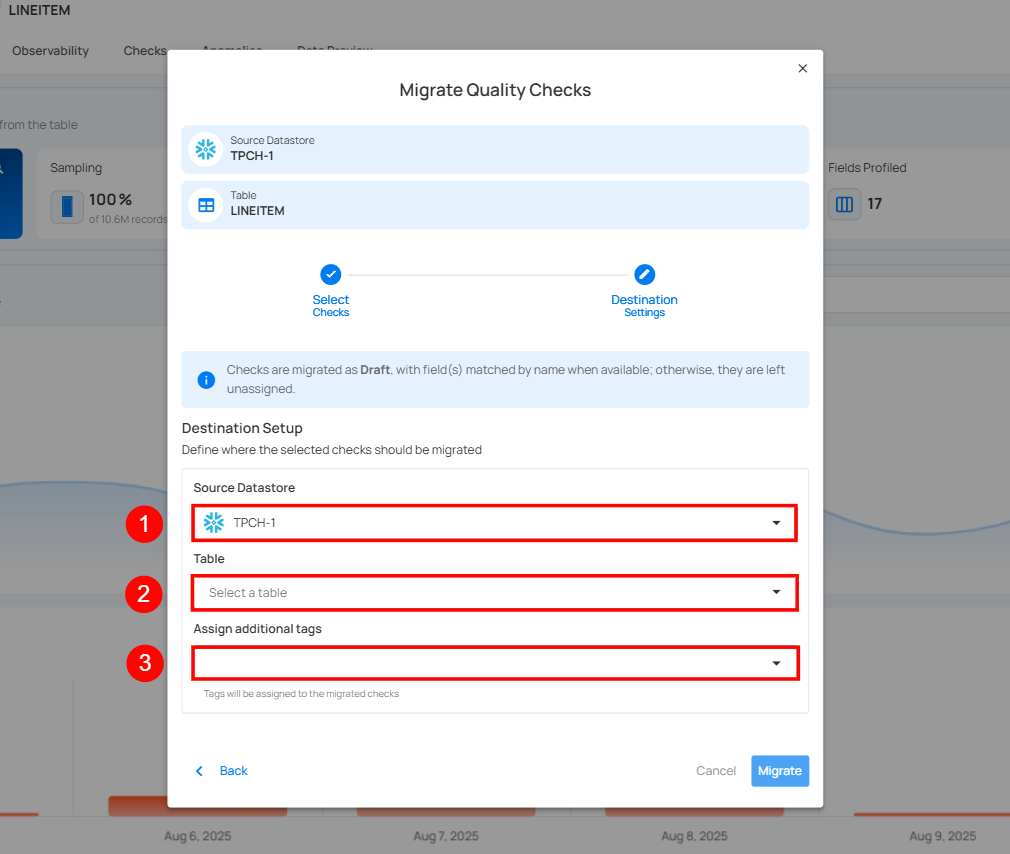Quality Check Migration
Quality Check Migration allows you to transfer authored quality checks from one container to another, even across different datastores. This feature helps you reuse existing quality rules without manually recreating them in the target container. This feature is useful when you want to:
- Reuse existing authored quality checks in another container or datastore.
- Quickly set up quality checks for similar datasets without starting from scratch.
- Standardize quality rules across multiple data stores.
Note
Archived and inferred checks are excluded from migration to ensure only active, relevant, authored checks are moved. All migrated checks are set to Draft status, allowing you to review and activate them in the new container.
Let’s get started 🚀
How It Works
The Migrate Quality Checks process consists of two main steps:
1. Select Checks
Choose which authored quality checks to migrate:
| REF. | FIELDS | DESCRIPTION |
|---|---|---|
| 1. | All | Migrates all authored quality checks available in the source container, excluding archived ones. |
| 2. | Specific | Lets you manually select individual authored quality checks from a list. Useful when you only need certain checks in the target container. |
| 3. | Tag | Migrates all authored quality checks that match the selected tags, allowing for automated grouping. |

2. Destination Settings
Define where the selected checks will be migrated:
| REF. | FIELDS | DESCRIPTION |
|---|---|---|
| 1. | Source Datastore | The datastore where the selected quality checks will be migrated. |
| 2. | Table | The specific target container (e.g., table) within the datastore where the checks will be added. |
| 3. | Assign Additional Tags | Lets you add tags to migrated checks to help with categorization and filtering in the target datastore. |

Note
Migrated checks are set to Draft. Field(s) will be automatically matched by name when possible; unmatched fields remain unassigned.
Example Use Case
Scenario
You have two tables in the COVID-19 Data datastore:
-
CDC_INPATIENT_BEDS_ALL – contains all hospital inpatient bed records.
-
CDC_INPATIENT_BEDS_COVID – contains only records related to COVID-19 cases.
The first table already has 12 authored quality checks to verify important fields like hospital_id, report_date, and available_beds.
The second table doesn’t have these checks yet, but it uses the same structure and fields.
Instead of creating all 12 checks again, you migrate them from CDC_INPATIENT_BEDS_ALL to CDC_INPATIENT_BEDS_COVID.
This way, both tables follow the same validation rules, saving time and keeping data quality consistent.
Before and After Migration
| Item | Before Migration | After Migration |
|---|---|---|
| Source Table | CDC_INPATIENT_BEDS_ALL (authored checks already exist). | CDC_INPATIENT_BEDS_ALL (unchanged). |
| Destination Table | CDC_INPATIENT_BEDS_COVID (no authored checks). | CDC_INPATIENT_BEDS_COVID (authored checks in Draft status). |
| Check Count | 12 authored checks. | 12 authored checks (copied). |
| Status of Checks | Active in source. | Draft in destination. |
| Benefit | N/A | Saves time, ensures consistency, and avoids manual recreation. |
Visual Diagram
graph TD
A[Start] --> B[CDC_INPATIENT_BEDS_ALL Source: 12 Authored Checks]
B -->|Migrate| C[CDC_INPATIENT_BEDS_COVID Destination: Draft Checks]
C --> D[End]Tips
-
Review before activation: Migrated checks are saved as Draft, so you can make adjustments before using them.
-
Use tags for tracking: Assign a tag like Migrated_Aug2025 to easily find migrated checks later.
-
Keep field names the same: The system only assigns fields when names match. If a field name differs during migration, it will not be mapped—another reason checks start in Draft status and require user review.